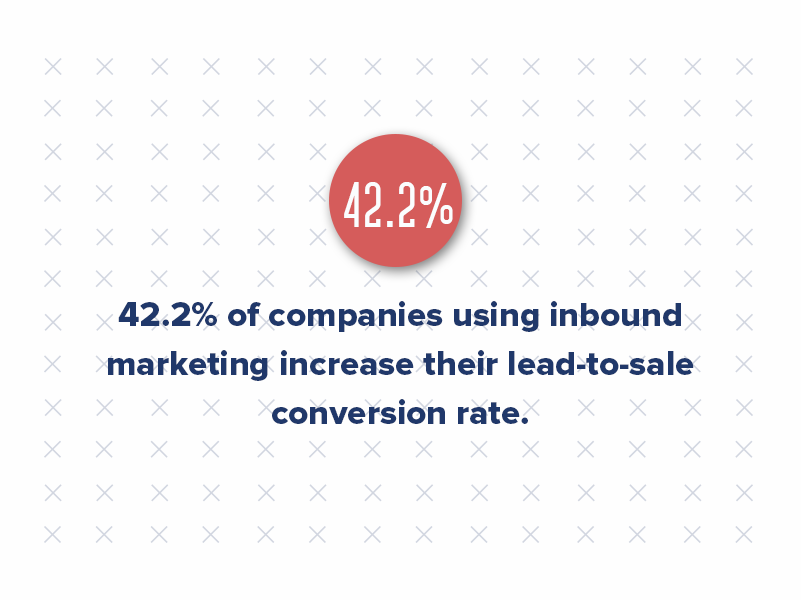Creating Content to Drive Your Buyer Persona Down the Multifamily Marketing Funnel
In today’s competitive landscape, content marketing reigns supreme. While everyone acknowledges the power of content, its true potential is unleashed only when there’s unwavering consistency behind every piece of content created. Companies that are dedicated to producing high-quality, steady content capture attention and often outpace their competitors in terms of leads generated and website traffic. Yet, maintaining this consistency in content creation remains a daunting challenge for many businesses.
An effective content marketing plan, fortified with a well-thought-out content calendar, serves as a roadmap to success. This plan allows you to forge stronger connections with potential customers and ensures that you address their pain points at every stage of the buyer’s journey. With such a strategy, your organization can solidify its reputation as a trusted, valuable resource in the industry.

Why is a content marketing plan important?
The digital age has transformed how consumers engage with product or service providers. The once-dominant traditional methods of multifamily marketing are now receding into the background. They’re being replaced by dynamic marketing campaigns that leverage blog posts, social media marketing, and other digital strategies. These campaigns aim to tap into the ever-evolving needs of potential customers, guiding them step by step toward making a purchase decision.
Imagine casually browsing social media and stumbling upon a blog post about a product or service you’ve considered. If this content resonates with your needs and is followed up with more relevant content addressing your specific pain points, wouldn’t you be more inclined to explore further? This exemplifies the power of consistent and relevant content in drawing potential customers closer to your brand.
Now, picture your favorite actor, known for stellar performances in your cherished movies. If they consistently choose roles that strike a chord with you, over time, their mere involvement in a project would pique your interest. Similarly, businesses should aim to be that actor for their customers — always reliable, always delivering quality.
To achieve this, businesses need a well-defined content marketing plan. It’s crucial to involve product development, sales teams, and tools like Google Analytics to understand what content appeals most to your audience. Incorporate keyword research to ensure your content ranks well and garners attention. And, of course, every blog post, social media update, or marketing piece should conclude with compelling calls to action, guiding readers to the next step in their journey with your multifamily brand.

1. Understand and develop a buyer persona
As the foundation of effective marketing plans, understanding and creating a detailed buyer persona is the cornerstone for any successful content marketing strategy. This persona is not just a vague concept but a dynamic representation of your ideal customer, tailored for your specific product or service.
A buyer persona, according to HubSpot, is akin to a semi-fictional character. This character mirrors your prime audience’s aspirations, pain points, behavioral tendencies, and motivations. The key to producing high-quality and relevant content lies in your grasp of these personas. By tuning into their specific needs and addressing their distinct pain points through each piece of content, you can create compelling blog posts, social media marketing campaigns, and other types of content that resonate deeply with potential customers.

But how do you embark on this journey of buyer persona development? Begin step by step. Start by diving deep into the insights and data from your existing audience. Conducting in-depth interviews, preferably three to five, can provide a wealth of information. These interactions can spotlight trends, preferences, and unique attributes that define your persona.
Don’t stop there. Your sales team is an invaluable reservoir of insights. Integrating data from your CRM and collaborating closely with your sales team can create a more holistic view of your target demographic. Tools like Google Analytics can further refine this view, offering data-driven insights into website traffic and the success of specific pieces of content.
Once you’ve sculpted a clear buyer persona, it’s not a ‘set it and forget it’ task. As market dynamics shift and product development evolves, the needs and interests of your audience might also transform. Regularly revisiting, reassessing, and fine-tuning your personas, fortified with keyword research and calls to action, ensures your marketing campaigns remain fresh, relevant, and impactful.
2. Understand the buyer’s journey
Now that you have your buyer persona, you can better understand the buyer’s journey. According to HubSpot, “The buyer’s journey is the process buyers go through to become aware of, evaluate, and purchase a new product or service.”
- Awareness — Your persona has identified a problem and is trying to understand that problem.
- Consideration — Your persona is considering all potential solutions to alleviate their problem.
- Decision— Your persona is choosing a specific option to solve their problem.

3. Using inbound multifamily marketing to guide your content
The solution to consistency is inbound multifamily marketing, a modern method that equips you to create content that drives buyer personas through your marketing funnel. This methodology will help guide your content marketing plan, expanding the awareness, consideration, and decision stages into four more specific stages: attract, convert, close, and delight.
Attract
The attract stage is about building awareness and creating content that turns strangers into visitors. Thus, you should primarily focus on blogs, social media, and white pages. The goal is to provide solutions to your persona’s problems.
Convert
This stage is about converting visitors into multifamily leads. The type of content you are producing would be in the form of a call-to-action (CTA) or landing page. Create gated offers where viewers must provide minimal information valuable to your business (email, zip code, etc.). For example, offers include infographics, fact sheets, eBooks, and how-to guides.
Close
In the close stage, your strategy should be all about turning leads into customers. In this stage, you should focus on your CRM, email, and workflows. It’s important to speak their language, meet their needs, and seal the deal.
Delight
In the delight stage, you will continue to provide value and show you care about your customers. In turn, they will become advocates and promoters for your business. Through social monitoring and surveys, you can see how satisfied your residents are; if there is a problem, you can address it quickly. Happy customers are your best advocates for attracting new leads.
Unlocking Success with Targeted Content Marketing
Recognizing the intricate nuances of these stages is pivotal for a successful marketing plan. By harnessing the power of content creation, you can navigate these phases with precision, ensuring your multifamily marketing campaigns align perfectly with your audience’s evolving needs. This systematic, step-by-step approach enhances the relevancy of each piece of content and amplifies its impact.
Ultimately, crafting the ideal material for the right context will position you as an authoritative figure in your industry, driving leads and fostering lasting relationships.




